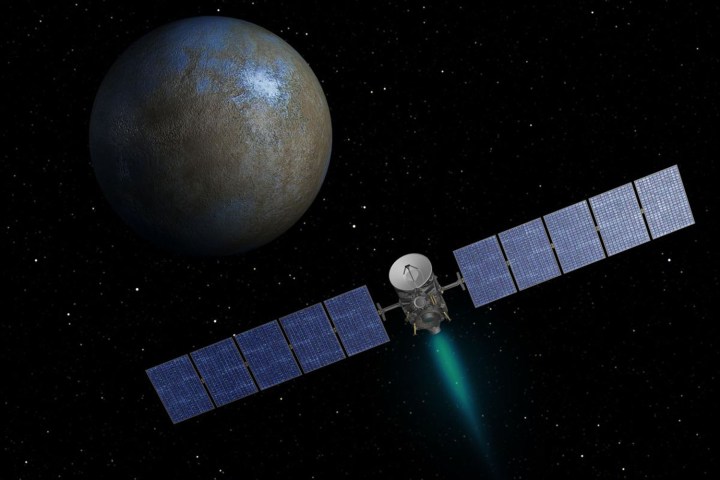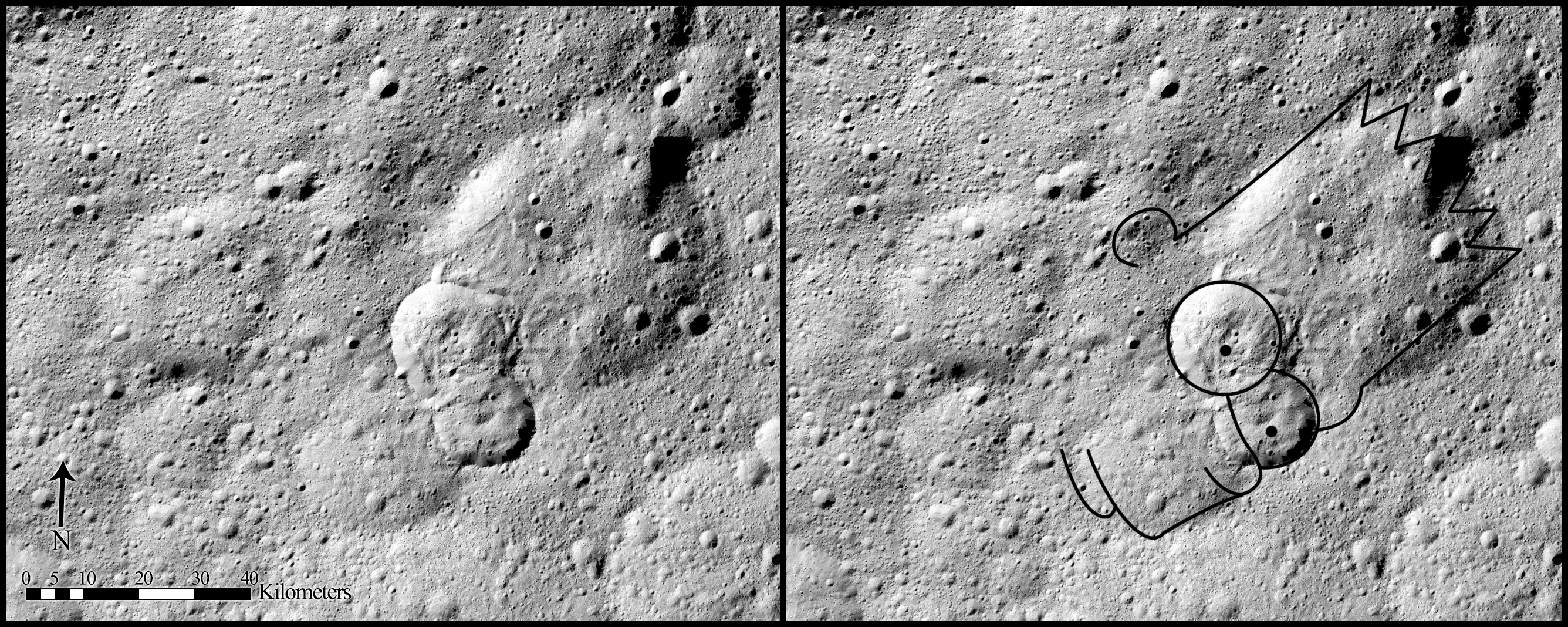
Led by Dawn researcher Britney Schmidt, the study has categorized three types of landslides, each with unique characteristics. Large and round landslides fall into Type I, identifiable by thick trunks and toe-like formations at the end. The most common landslides, Type II, are thinner, shallower, and longer than Type I, resembling avalanches found on Earth and Mars. Finally, Type III landslides occur at low latitudes and in the asteroid’s impact craters, seeming to take shape due to melting ice.
“When we first started seeing all the landslides, it was well before we had crater names and good maps for everything,” Schmidt told Digital Trends. “So Heather Chilton, my Ph.D. student, gave all the big ones nicknames so that we could discuss them a bit more easily among the team.”
Chilton noticed that one of the landslides was adorned by two impact craters side by side and jagged edges at the top. A rough outline revealed a familiar character: Bart Simpson. “[The name] stuck,” said Schmidt.
Ceres contained more landslides than researchers expected. Landslides were detected in 20 to 30 percent of craters wider than six miles. These features of mixed rock and ice have previously only been seen on Earth and Mars. By analyzing the formation and distribution of these landslides, Schmidt and her team estimate that the asteroid’s upper layer may contain as much as 50 percent ice by volume.
“By looking at their shapes, we can learn something about how the landslides move, which helps us understand what the materials inside the landslide are made out of, and in this case, suggests that ice is involved in how the landslides are moving,” Schmidt said. “While they don’t directly tell us anything about Earth landslides, it gives us one more place to look to try to understand how this fundamental geologic process occurs across the solar system.”



